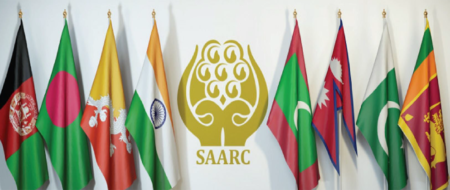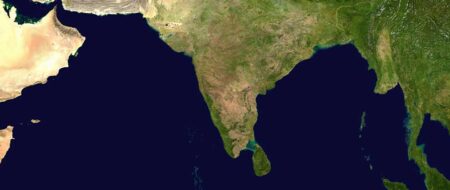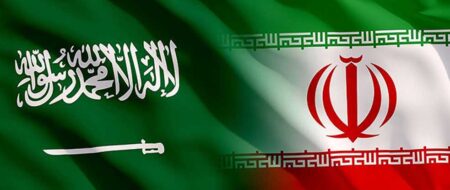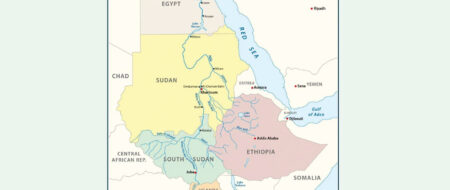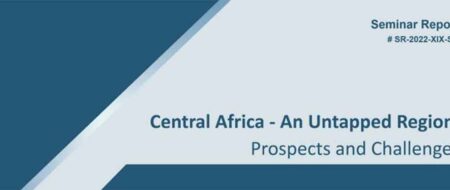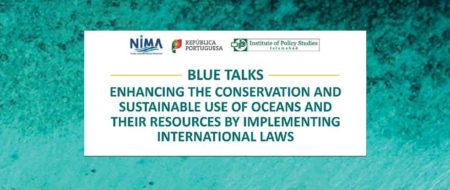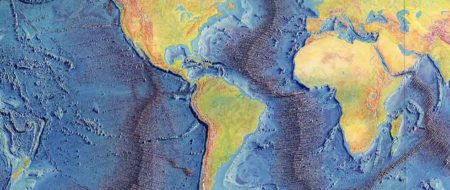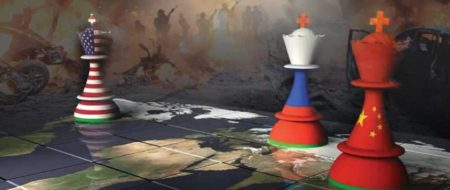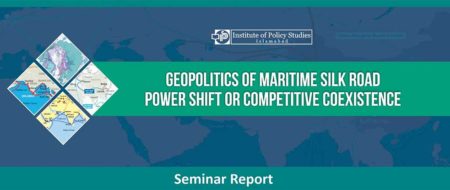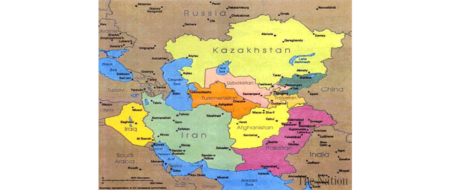Situation in FATA: Causes, Consequences and the Way Forward
The troublesome situation in Pakistan’s tribal areas is a consequence of the so called war on terror, not a consequence.
Policy Perspectives , Volume6 , Number1, January – June 2009
Abstract
[Pakistan’s Federally Administered Tribal Areas (FATA) had been peaceful before 9/11. The ongoing insurgency is not a local phenomenon; rather things have spilled over into Pakistan from across its Western borders where American and Allied Forces have drastically failed in achieving any of their stated targets. NATO and America have been launching military operations without intimating Pakistani authorities and this has resulted in foreign militants being pushed into Pakistani areas. Agreements with militants that could ensure peace in the area were sabotaged with airstrikes and propaganda – resulting in expansion of the militancy. Youth of the area are fast joining the militants and one of the reasons can be that FATA is underdeveloped, with scarce social services and virtually no job opportunities despite the territory having vast potential for development, particularly in the mineral sector. For immediate and long-term peace and development in the region, dialogue should precede military action. National strategy about the “War on Terror” itself needs a review and the development potential of FATA needs to be exploited. Ed.]
The Context {Khalid Rahman·}
FATA, despite having some administrative and political problems has been one of the most peaceful areas of Pakistan since 1947. The areas remained, generally, stable even when the war against Soviet Union in Afghanistan was in progress and later during the infighting among various Afghan groups. These were the days when about one-fourth of total five million Afghan refugees were living together with the local inhabitants. Even in the initial years after the US attack on Afghanistan in 2001, this tribal belt remained calm. However, with increased resistance in Afghanistan, the tribal areas have been gradually transformed into a kind of war zone.
Today, FATA is being called a cause and centre of militancy by many, not only in Pakistan but in the entire region. While the Afghan government and the international community is blaming Pakistan for providing a safe haven to militants in its tribal belt, the government of Pakistan believes that the growing number of suicide attacks and other violent incidents have their roots in this area. Meanwhile, the people of FATA feel that they are being subjected to killings and forcible displacements not only by the US and NATO forces but by the Pakistani army and the militant groups as well. While the international community and global media are describing FATA as the cause of instability in the region, most people in the country and even outside believe otherwise, that is, it is basically the consequence of presence of foreign forces in Afghanistan.
The fundamental question is that whether FATA is a cause of instability in the region or is it a victim of what is happening around it? Of the many questions being raised about the situation in FATA and the strategy to move ahead, this question needs to be addressed before taking any other measure by all those who have any stakes in this area and who are genuinely interested in bringing peace to the region. The answer to this question, each entirely different from the other, should define the strategy for handling the situation.
Also, it would then be easier to answer a host of questions like, is deterrence, meaning a military action, the best option or should it accompany diplomacy or precede it or should it never be an option keeping in view the history of the area and the fact that a military action cannot be successful in bringing a sustainable change unless it has enough support of the people. Consequently, is it possible to take the people along without convincing them that the action is in their interest? Also related are the questions regarding the presence of foreign elements and about issues of economic infrastructure and development in the area. While foreign forces can afford to simply ignore the root cause leading to such questions, should the Pakistan government also ignore them by allowing violations of its territory and killings of its own citizens? So, to devise a pragmatic strategy to move forward, it is crucial to understand the real situation in FATA and come up with a clear answer that are we addressing a cause or a consequence?
Ali Mohammad Jan Orakzai·
Federally Administrated Tribal Areas (FATA) of Pakistan is the focus of world attention once again. Though extremely poor and backward, these areas have always played a pivotal role in the history of the region, presenting a wide, valid and valuable treasure of landscape, archeology and cultural legacy amongst the jigs of towering peaks, valleys and planes. There dwells a society distinguished for its hospitality, bravery, culture and traditions.
FATA has remained in international focus, particularly since the turbulent Cold War years. Owing to its geostrategic location, the region became a playground for the rival forces competing to extend their spheres of influence. On departure of Soviet forces from Afghanistan, FATA lost its importance temporarily only to re-emerge on the global scene after 9/11. Tribesmen, who have guarded their independent status for centuries, were however quick to realize the extreme sensitivity of the situation arising out of the 9/11 when the government of Pakistan decided to deploy troops along the western border. The tribesmen rose to the occasion and in an impressive display of patriotism not only gave a rousing welcome to the troops but joined them physically to guard the border. Some areas which had been inaccessible in the past were thus opened up for the first time in history without a single shot being fired.
Today, the situation in FATA is extremely volatile having dangerous repercussions not only for the area but also for the country, for the region and for the entire world. So, it becomes important to understand the situation and then look for a way forward. There are hardly any easy solutions to this very complex problem as a number of visible as well as invisible factors are involved. The current situation in FATA, indeed, can not be seen in isolation. One has to see it in the backdrop of US attack on Afghanistan in 2001 and the following state of affairs.
The geographic and demographic silhouette
FATA comprises of seven agencies and six frontier regions. These include Bajour agency in the north. In the central FATA lie Mohmand, Khyber and Orakzai agencies. Orakzai agency does not have a border with Afghanistan. The lower FATA has Kurram, North Waziristan and South Waziristan agencies. Close to Khyber agency are Frontier Region (FR) Peshawar and FR Kohat – of which the famous Darra Adamkhel is a part. And down below are FR Bannu, FR Lakki, FR Tank and FR Dera Ismail Khan.

The area is spread over 27,000 sq kilometers compared to NWFP which is over 100,000 sq kilometers. It has a population of 3.5 million as per 1998 census which is considered grossly underestimated; as a matter of fact very few people went there to see the actual population. All the people of tribal areas are Muslims by faith without any exceptions. It is an egalitarian society guided by local norms, values and traditions called Pukhtoonwali (Pukhtoon code of honor), which they really adhere to very strictly. Characteristics and traits of the FATA people include humanity, chivalry, revenge, honor, social equality, local autonomy, independence of tribes and sub-tribes. Historically, foreign interference has been resisted with full might in the traditional gun culture.
It can be said that the people of FATA have conservative Islamic orientation but they are not fundamentalists. Jirga (the assembly of elders and influentials) as an institution of resolving disputes has been a tradition for thousands of years in this society. All the disputes, without any exceptions, are resolved through this system.
FATA has been an underdeveloped region of the country. Literacy rate is only 17 percent (as compared to the average 45% for Pakistan) and among the female population it is even low, just 3%. There is one bed in hospitals for every 2327 people as compared to 1450 in the rest of Pakistan. For a population of 8189, only one doctor is available and a mere 43% people have access to safe drinking water[1].
System of governance
FATA enjoys a special constitutional status. The area falls under the executive authority of the federation, which appoints the Governor (of the NWFP province) as its agent who is the Chief Executive of the tribal areas. Twelve members of National Assembly from FATA are elected on an adult franchise basis. But, unfortunately, whereas they can legislate for the rest of the country, they cannot legislate for FATA; it is quite an irony. There are also eight senators from FATA in the Senate of Pakistan. A dedicated FATA Secretariat works with an Additional Secretary, Chief Secretary and four other secretaries heading various departments. A semi-autonomous body named FATA Development Authority was created in 2006 as a capacity building measure.
The organogram of FATA Secretariat is such that the Additional Chief Secretary (ACS) oversees four secretaries for finance, planning, law & order and administration and coordination. Before 2006, when the present “reforms” have not been introduced, there was only one secretary in the Governor House who was responsible for all these functions along with looking after the governor.
FATA Development Authority (FDA) is a semi-autonomous body, responsible for uplifting various areas such as industry, mining, building of dams and skills development. It works closely with the private sector in a private-public partnership to undertake development activities in tribal areas[2].
Independent monitoring system was introduced in FATA in 2006. There were a lot of complaints that the money allocated to tribal areas is never actually spent on grounds. Therefore, this monitoring system was introduced, in which there are experts from both private and public sectors. In parallel, there is a Governor’s Inspection Team that also does monitoring as per the Governor’s instructions. At the field level, there are Political Agents (PAs) who take care of administration.
The Frontier Corps has traditionally been maintaining law and order in the agencies for over a hundred years without the presence of regular troops. The system of political agents may be described as the “carrot and the stick” system. The carrot being development activities and the Frontier Corps working directly under the political administration, functioning as the stick. In addition, there are Khasadar, locally recruited from the tribes, and Levies to maintain law and order in the area. The institution of Maliks (tribal elders) has been there and still remains.
FATA before 9/11
FATA was perfectly at peace with itself and its neighbors prior to 9/11. Information about and understanding of FATA was scant, in Pakistan and abroad.
Nearly 5,000 sq kilometers of area was totally inaccessible with no writ of the government. There was no militancy and no suicide attackers, although there had been presence of some foreigners due to various reasons. Besides them there were also Afghan refugees but they were shifted to settled areas in the year 2004. Taliban were present but no one had ever heard of militant Taliban till March 2004.
Unfortunately very little attention was paid to the development activities of these tribal areas. In 1999 and even till 2001, the total budget for FATA used to be no more than 800 to 900 million rupees for 3.5 million people and over 27,000 sq kilometers of area. Gradually, it was increased and today it stands at roughly 7.5 billion rupees, close to 100 million US dollars. It is, indeed, a very small amount considering the area, population, and the potential for development. FATA was neglected and unfortunately no serious attempt was made by any government to bring the tribal areas into the national mainstream.
Post 9/11 Army Operations
In the first week of December 2001, the Allied Forces launched an operation in Tora Bora which lies just opposite to Kurram agency. These are the low hills of Koh-e-Sufaid (White Mountain) on the Afghanistan side, very close to the Pakistan border. Pakistan and its military command were not informed by the US/NATO about this operation and they came to know about it through media.
In the face of this Tora Bora operation, some fleeing militants might have crossed over to the tribal areas in search of refuge as there was no presence of law enforcing agencies and government officials in these “No-go areas”. There was realization of this possible movement on the Pakistan side and as Pakistan did not want it to happen, the decision was taken to deploy Pak army in the area. As a result of this decision, there were more than 240 people who came across and were caught without a shot being fired. This happened with the assistance and support of the tribesmen, showing how patriotic and cooperative these people were who have now gone hostile.
Pakistan army was also taken very peacefully into Khyber agency and “No-go areas” such as Tirah, east of Kurram agency, and Shawal in North Waziristan (part of it is also in South Waziristan). The Fakir of Ipi[3] lived in the same area as Ipi village is located in Shawal.
The Allied Forces in Afghanistan then launched an operation known as Anaconda near North and South Waziristan somewhere in March-April 2002. Pakistan authorities were again not informed. Then in May 2002, Gen Tommy R. Frank, Commander of US Central Command (CENTCOM) came to the GHQ to have discussions with Pakistan’s military command. He told that some Al-Qaeda people have gone into the tribal areas of Waziristan and they have been provided protection and safe haven by the tribesmen. The words used were: “puddles have been provided where these crocks are living. So, we have got to dry up the puddles and we have to take out these crocks and eliminate them.”
Pakistan complained that it was not informed earlier and told the Americans that Pakistani troops had been deployed on the eastern border with India after the so called attack on Indian parliament and resultant tension. Nevertheless, Pakistan took a risk and withdrew a brigade, comprising of about 8-10 thousand soldiers, from the eastern border and cleared the Shawal area with cooperation of the tribesmen.
Next was Mohmand Agency. Almost one-fourth of Mohmand agency area was inaccessible; Pakistan got reports from Allied Forces that a lot of Al-Qaeda people are hiding there. Pakistan said that it will block the border and launch an operation in its territory to find Al-Qaeda people. Pakistan army started its movement at 3’o clock in the morning on 20th of June 2003 and by 6’o clock in the evening reached the Afghan border. Pakistan army says it was not an operation and just a walkover as the tribesmen were very cooperative. They marched with the army. The army did come under slight fire near Lala Pass by some miscreants believed to be from the Afghan side. Jirga people and the tribal elders also came under fire along with army. By August 2003, all the erstwhile inaccessible areas were under army’s control. Pak troops were deployed on the border, on the zero line.
Pakistan’s military operations continued after that and are still continuing in Bajour and Mohmand while some limited operation is taking place in Khyber Agency. Also, there is operation in Swat – in its settled area. Exact figures of casualties of all these operations are not available but the estimates are that Pakistani forces have killed approximately over 2500 people believed to have links with Al-Qaeda elements, including the local militants. Over 1,800 of Pakistan’s own troops have been killed and over 3,000 have been wounded. Regarding the foreigners present and killed in FATA, different nationalities are mentioned. However, it is needless to point towards their countries of origin as those operating as non-state actors should not be allowed to tarnish the image of their respective countries. Foreigners apprehended were over 600 including 240 apprehended in December 2001.
Development: Potential and Recent Initiatives
In 2006, Pakistan government launched an initiative of working out a strategy for development of tribal areas over a period of nine years. Considering that FATA was underdeveloped as compared to the rest of the country and very little amount was allocated for it, the need was to chalk out a very comprehensive development strategy. The international community also showed an interest; international and local organizations such as IUCN, DFID, USAID and SMEDA became involved. Importantly, for the first time, consultations with the actual stakeholders – the people of the tribal areas – were also held. Consultation workshops were organized throughout FATA where local people participated and gave their consent as well as offered cooperation in the initiative.
The objectives of this Sustainable Development Plan (SDP), that finally emerged, included addressing the basic social needs and underlying causes of prevailing disparities in FATA, improving institutional and financial capacity, exploring and diversifying available opportunities to make positive contributions towards economic uplift of the area, managing and maintaining ecological and subsistence support to increase livelihood security for ordinary people and monitoring and evaluating multi-sectoral progress to support and strengthen sustainable development.
The development targets were set forth by the SDP for 9 years – five years for actual development and 4 years for consolidation included taking the literacy rate to 34% and primary enrolment to 40%. The financial outlay for Sustainable Development Plan was estimated at 2.46 billion dollars. Of this, the government of Pakistan was to provide one billion dollars over the next five years in the form of an annual budget. It was expected that the donor countries would pay the rest of the money. While the donors including the US itself initially did pledge help, very little has materialized so far and the SDP stands stranded for now[4].
As to the potential, mineral sector is very important as FATA is believed to have many minerals that can be mined easily. The area is so rich that if this potential is exploited to the fullest, it can bring enormous gains for FATA and Pakistan. Geologists say that North Waziristan has reserves of copper and where there is copper, gold is also usually found. A contract was given to an Australian firm to exploit these reserves but unfortunately, because of the law and order situation, the work has stopped.
In some areas minerals have already been explored and are being mined, however, this effort is minimal as enough resources and technology is not available. Copper reserves in Mohmand and Waziristan are estimated at 25 million tons each. Chromite and soap stone are found in Kurram while best quality coal is present in Kurram, Orakzai and F.R. Kohat. In some places, such as Darra Adamkhel, it is just three feet below the surface. Mohmand has vast reserves of marble that is considered among the best in the world; the initial estimate for it is seven billion tons but it may be much more; Italians have already showed an interest in developing the marble sector.
As far as the mineral sector is concerned, what FATA needs is technical assistance from national and multinational organizations involved in exploration and development to bring the already known mineral prospects at par with international standards. By providing securities and guarantees both in fiscal and legal regimes, the government can attract national and multinational investors for mining activities.
Post 9/11 situation in Afghanistan and its impact
Pakistan has suffered greatly because of the military interventions against Afghanistan. When the Soviet Union invaded and occupied Afghanistan in 1979, Pakistan was the frontline state and rendered a lot of sacrifices. Massive influxes of refugees – about six million – were witnessed and at least 2.6 million are still here; weapons and drug culture the introduced in the society. When the Soviet Union withdrew, Afghanistan and Pakistan were left high and dry. This was a major and fatal mistake. Afghanistan was left in shambles and a civil war ensued from which the country never recovered. The Taliban resurgence was a direct consequence of abandoning Afghanistan.
Osama bin Laden was blamed by US for 9/11 attacks and the then Afghan government – Taliban – was approached to hand over Osama bin Laden to the United States. They refused on their own principles, right or wrong. Afghanistan was invaded and objectives of the invasion were to kill or capture Osama bin Laden, destroy and weaken Al-Qaeda so it does not pose a threat to world security, destroy and weaken Taliban, bring democracy in Afghanistan leading to reconstruction, rehabilitation and socioeconomic development. Interestingly, the strategy used for this was predominantly military.
If we look at the present day Afghanistan situation in the light of these objectives, the picture that emerges is really pathetic. More than 7 years after the US attack, nobody knows whether Osama is alive or dead. Taliban have been decrowned but the US has failed to eliminate them and the resistance has been rising. It was estimated that hardcore Taliban would not be more than a few hundred. But could a few hundred Taliban do what they are doing to forces of 39 countries operating in Afghanistan – an estimated 70,000 troops of the most modern armies of the world? The point is that because of these military operations and resultant collateral damage, the peaceful people have also been alienated and have started fighting alongside the Taliban. This Taliban movement has now snowballed into a form of a nationalist liberation war.
As for establishing democracy, elections were held but due to the perceptions prevailing in Afghanistan, the majority Pukhtoon community has been marginalized politically. They feel that they have been left out. Whatever democracy is there is confined to Kabul and it does not have any hold or control over the rest of the country outside the capital city.
A lot of money was promised for reconstruction and rehabilitation but much less was actually released – US $15 billion as against the promised $25 billion[5]. While the pace of development activities is very slow due to the law & order and security situation, it has also been reported by leading institutions that whatever of the promised money reached Afghanistan was misused and corrupted.
Another phenomenon which has become a source of great concern globally is the poppy cultivation. In 2001, it was at zero level, however, currently it is just short of 7,000 metric tons and its implications are well-known.
Before 9/11 there was no problem in the tribal areas of Pakistan. Whatever is happening in the tribal areas today is a gradual spillover effect of Afghanistan invasion and ensuing events. Militancy and violence have gradually found roots in our tribal areas and are spreading towards settled areas. In fact, they have already spread to some of the settled and previously peaceful areas. At this moment there are around 100,000 Pakistani troops on the western border and they are engaged in fierce battles in Bajour, Mohmand, Swat and parts of Khyber. Thousands of people have perished in suicide attacks all across the country. Economy of Pakistan has literally been destroyed; the country has to go around with a begging bowl to revive its economy. Pakistan’s image has been badly tarnished. It is perceived to be a state which sponsors terrorism, a notion which is not true. In terms of damage, causalities and psychological setback, no country fighting terror has suffered as much as Pakistan. Yet, it is being perceived as a threat itself.
More than 2.5 million refugees are still in Pakistan despite the fact that coalition forces have been in Afghanistan for the last seven years. The world community has failed to help us even in this regard. Conversely, there are elements that, like always, are trying to exploit this unstable situation. One can find linkages between instability in Afghanistan and resultant troubles in FATA and the deteriorating situation in Balochistan.
There are anti-US and anti-West sentiments in the country. In short, the War on Terror is being seen by the common man as an American war and the Pakistan government is seen to be fighting this American war. The credibility of our own government is a question mark in the minds of the people.
Deals and agreements will the Tribesmen
Pakistan during last few years tried to bring the militants onboard by holding talks with them; on some occasions, agreements were reached. The agreements, however, were never allowed to succeed. It is quite evident that Americans did not want such agreements. The famous Shakai agreement of April 2004 with militant leader Nek Mohammad was the first such deal. It was made after there were bloody clashes in Wana starting on the 16th of March, 2004. Nek Muhammad was killed in a US missile strike within one week of signing the agreement; fighting erupted within hours after his death and continued till the end of 2004.
In the case of Bajour, Pakistani authorities decided to get an undertaking from the tribesmen, not a formal agreement. As per the undertaking, tribesmen were to refrain from certain acts and concede that government will reserve the right to act against them if they did not conform to the undertaking. The then governor had got the undertaking approved from the powers that be. It was decided for the tribesmen to come and sign the undertaking on October 30, 2006 at 9 a.m. Somehow this news leaked out and at 5 a.m. on October 30, the Madrassah involved in negotiations was bombed. Bajour has never recovered since.
There were some agreements as well with those taking up arms in South Waziristan – Makki and Laddah areas. The present government in NWFP also signed some deals with the militants. However, all such deals have been strongly opposed and sabotaged one way or the other. The argument is that the truce resulting from the agreements gives the militants time to regroup and reorganize. However, it is deliberately ignored that military operation has been resulting in the spread of militancy from one tribal area to another and also to settled areas. People have been provoked to disregard agreements and get back to fighting.
The reaction to such sabotaged deals and military operations is fatal, for instance in Dargai, 42 innocent recruits were killed by a suicide bomber. Militancy is fast spreading. Nobody could have ever imagined that there will be any operation in Mohmand as it was peaceful until recently; Khyber is also simmering. There have been attacks on trucks carrying NATO supplies. Considering the supply line from Karachi to Khyber and from Karachi to Chaman, the question is how many forces would you need and can deploy to protect these convoys? It is a very dangerous trend, indeed.
Moving Forward
Here are a few recommendations for Afghanistan, Pakistan and FATA: The most important thing is to understand the entire situation properly. Seeing FATA in isolation and not in the backdrop of the Afghan war would not lead us to the right conclusions. One has to have a comprehensive approach; FATA is not to be separated from the big picture as doing so will only lead to superficial results. A comprehensive approach means addressing the problem regionally with the aim of resolving this problem in Afghanistan, FATA and the rest of Pakistan.
As far as the situation in Afghanistan is concerned, the grand Jirga needs to be reviewed and reorganized for peace and security. While holding the Jirga, it needs to be recognized that any strategy for a stable solution and long-term peace in the country as well as in the region will have to recognize the Taliban as an important stakeholder.
There is also an urgent need for massive development activities in Afghanistan. It is time that all the world community should pump in all the money promised for reconstruction and rehabilitation activities.
Pakistan should also be provided with sizeable economic aid as per its losses. It has been given about ten billion dollars during the last few years. But according to economists and financial experts the actual cost of the War on Terror it has suffered is much more.
Democracy and institutions need to be strengthened and encouraged and political solutions have to be found. Pushing Pakistan to “do more” will only destabilize the country.
For FATA, the most important step is to bring the area into national mainstream. Administrative and political problems of FATA need to be resolved, particularly the colonial system of administration needs to be reorganized.
Substantial socioeconomic developments are the need of the time. Sustainable Development Plan needs to be supported. Top priority has to be given to education and especially the deficiency of teachers must be met immediately. Job opportunities for youth of the area should be created. The potential of mineral sector awaits exploration.
Military operations should be launched against specific targets but only on the say of credible intelligence sources in order to avoid collateral damage and alienating the people. Air strikes are not favored at all whether from outside or within the country as these only alienate the people and cause tremendous damage.
Dialogue needs to be encouraged. Tribesmen should be taken onboard as their support is required. Talks should also be held with the militants in a meaningful manner. In this connection, Pakistan needs to take independent decisions and resist pressure from outside.
Comments Razia Sultana·
There is no doubt about the fact that FATA had constitutional, administrative and political problems, yet it had been quite peaceful before 9/11, the American attacks on Afghanistan and the presence of coalition forces in that country. The immediate cause which made FATA a flash point for international attention is the American and NATO presence in Afghanistan. It is also the cause of Al-Qaeda and Taliban’s presence in FATA. This is the backdrop in which one has to see the current turbulence and volatility of FATA. It has been felt and experienced not only by the people of that area but by the entire population in the form of violent acts taking place all over the country particularly during last couple of year. Following points are important in this connection:
The problem lies in the terms of engagement between America and Pakistan as a frontline state in War on Terror. For Pakistan, securing peace and stability in FATA and also all over the country should be the prime objective. There is a need to take a long-term view of the policy in this context.
Secondly, it is important to differentiate between Taliban and Al-Qaeda as in the definitions of Americans and the allies both are placed together. Though Al-Qaeda was identified as masterminding 9/11, it had nothing to do with Taliban. There is no doubt about the fact that Osama bin Laden, at that time, was residing in Afghanistan and the then Taliban regime provided him shelter. But it does not mean that they played a role in whatever happened on 9/11. None of the perpetrators of the 9/11 attacks were Afghans or Pakistanis. The problem lies here and it is not appropriate for Pakistan to alienate the Taliban. It is not being suggested here that all the Talibans should be protected but they should at least be considered as stakeholders. This step is necessary for any future stability in Afghanistan. Trying to eliminate the resistance indiscriminately is not going to solve the problem.
Al-Qaeda is an international organization or a group having its own objective. Taliban, on the other hand, are local – a regional entity – and have to be seen as such. Pakistan should not take foreign pressure for dealing with the Taliban. However, within the Taliban there may be some hardliners and miscreants and they need to be identified and dealt with accordingly.
The administrative and political issues related to FATA should also be resolved and the area should be integrated with the rest of the country. The colonial system of administration needs to be changed and the fundamental rights and social services and facilities should be granted to the people. New development initiatives and job opportunities are equally important.
Tayyab Siddiqui·
There are some very troubled questions regarding the present state of affairs in FATA. The predicament started when President Musharraf capitulated before the American demands, without putting any price for and determining the parameters for cooperation in the War on Terror. History shows that when nations choose dishonor to avoid war, the war always happens. Everybody believes, of course baring the government and a few others, that this is not Pakistan’s war. The country is fighting it in pursuance of the American agenda in the region. If we really believe that the objectives of US invasion in Afghanistan were to capture Osama and bring democracy we are fooling ourselves. There are many examples of US supporting dictators, all around the world, to suit its own interests.
Pakistan has paid a heavy price for participating in the War against Terror. Some 100,000 troops are currently deployed on the Afghan border and by our own account more than 2,000 security personnel have been killed there. A report by the Ministry of Finance says that the economic cost of Pakistani, engagement in WoT amounts to 3.1 trillion rupees. So why has the government kept quiet as the general impression is that Pakistan got 10 billion dollars from Washington? Why do not we make a case that “terrorism” is a global phenomenon, a global responsibility and the international community must come forward and make its own contributions? An enormous gulf exists between the people and the government because of the latter’s cooperation with America. Now Pakistan has to care for its eastern border as well after what happened in Mumbai: on 26th November (2008). Therefore, it should take the totality of the situation to understand the big picture.
A number of new expressions such as “extremists”, “militants”, “askariyat pasand” and “tashaddud pasand” have been coined regarding the militancy and the ongoing operation in FATA. It sounds similar to the vocabulary invented during 1971 while we were dealing with the situation in the then East Pakistan. One fails to understand how somebody is established as a Taliban, a militant, an extremist or a terrorist? Do these people have some special features on their faces? Moreover, what crime is there in being an extremist and holding very extreme views about a certain situation?
FATA has been mishandled, administratively and politically, since the very beginning but more so in the recent years. There are several questions about the role of Maliks and political agents and those who are supposed to take care from a higher position. It was indeed unfortunate to note that a governor in NWFP was appointed (now an ambassador in Turkey) who did not even know the language of the local people. The development potential, including that of the mineral sector, has also been ignored.
Now there is talk of bringing peace in the area through dialogue. It is very hard for such initiatives to succeed for the very simple reason that five years of military operations have done much damage leaving around 2,500 dead. There is a need for agreement on some basic principles for any dialogue to succeed. Most importantly, unless there is a reversal in the policy that has been followed since 9/11, peace will merely be a wishful thinking.
Raja Ehsan Aziz·
To understand the situation in FATA, it is important to have a look at where Afghanistan stands today. Statistics and indicators are worrisome. Poppy economy is estimated at some five billion dollars and it is alleged that everybody including the government functionaries, from top to bottom, are involved. 93-95% of the world heroin is produced in and exported from Afghanistan. The country (Afghanistan) stands at 174 out of 178 countries in the UNDP Human Development Index, for a population of only 30 million, which is less than NWFP. While all the money promised to Afghanistan did not materialize, still billions of dollars, have come – US $15 billion against the promised $25 billion. The question is mind boggling that where have these billions of dollars given to the country as reconstruction aid, gone? The only notable development is in the form of rebuilt strategic roads – with the main purpose of enabling the troops to move around.
In terms of corruption, Afghanistan stands among the top ten most corrupt nations in the world today. There are indications that corruption is now deeply rooted in the present day Afghan system. Unfortunately, people at the top are also not free from this malaise as the latest reports allege that those at the helm of affairs are involved as well. So while looking at the troubles that FATA is caught in today, one has to keep in view the situation next door. However, it is not the Afghan state that has failed, but it is the failure of the system that has been in place as a result of US intervention.
Enough blood has been shed in the name of 9/11 and collateral damage still continues in Afghanistan. It is well documented that Americans had planned to topple the Taliban regime using various means – including some of the neighboring countries – around September-October of 2001. Even if there was no 9/11 there would have been a major international intervention in Afghanistan in one form or the other. While the intervention was made and it continues, it is not clear what really are its parameters and goals.
Now there are strong feelings all around the Muslim world that Afghanistan is under deadly occupation. If a free and fair opinion is taken in Afghanistan, some 95% of the Pushtoons and a large number of Uzbeks, Tajiks and other ethnic groups of the country would say that they do not want the presence of America, NATO and the rest. While they may not say so in public, even people at the top including ministers, members of the parliament and Loya Jirga are increasingly becoming wary of the prolonged occupation. Even those who are apparently working with the administration in Kabul are only doing so for the sake of survival. Instances have been witnessed that one brother is working in the Afghan army and the other with the Taliban. As those installed by the US, including Karzai, have no legitimacy the writ of the “government” is nowhere prevalent beyond the “city state” of Kabul.
America and NATO have now realized that they should talk to Taliban but there seems no quick way out. The way out has to be found. One can argue that FATA situation will hardly stabilize unless the occupying forces get out of Afghanistan.
As far as the democratic process is concerned, there are quite a few doubts on the parliamentary and presidential elections being free and fair. Elections are planned again for next year (2009), yet in the present circumstances can hardly be different from the previous elections.
As far as FATA is concerned, the military operations and use of force is no solution. There have been atrocities of grave nature[6] from both sides, but mostly from the security forces. Although the Chief of the Army Staff has been reported telling his soldiers that these people (militants) are their brothers, there is no accountability of the security forces for what they are doing in the tribal areas. Common people believe that army is fighting America’s war. This has resulted in hatred for the military and ignited strong reactions from the locals. The bottom line is that unless Americans pull out and a political process in Afghanistan takes roots, there will be no peace in the country and no settling down of the situation in FATA.
Oybek Arif Osmanov·
The twenty-first century is a time in which nations should be deciding their fates themselves and be able to get rid of the menace of “extremism” and “terrorism”. The “big brother” and “small brother” mindset has to go. Present time confronts us with a lot of important issues. How to define “terrorism” and “extremism” is one such issue. Is it “terrorism” or “extremism” only when something untoward happens to the greatest “superpower”? Besides, there are other pressing issues such as the presence of foreign forces in various countries and regions that lead to instability in neighboring countries.
Media, at times quoting official sources, mentions the nationalities of foreign militants present in FATA as Uzbeks, Tajiks, Turkemans along with others, giving a bad name to their countries of origin. One should keep in mind that a lot of Afghan Uzbeks, Tajiks, Hazaras and other ethnic groups came as refugees and settled in various parts of Pakistan. Three waves of refugees from Afghanistan have been witnessed during the last 30 years. First after the Soviet invasion; second after the fall of the Najeebullah regime and taking over of Mujahideen’s government and then when the Taliban took over. Now, a fourth wave is emerging because of instability in Afghanistan and the neighboring FATA region.
No doubt that there are those who left Afghanistan with their families for their survival and mostly Afghan refugees follow peaceful Islamic values and are always welcomed in every country. But unfortunately there are also some small groups of miscreants being used by foreign hands for their own designs in the region. “Terrorists” arrested or killed in Afghanistan, Pakistan or in any other country belong to many countries like Europe, America, Middle East and other Asian countries. Majority of them have been deceived by foreign hands and have been involved in terrorism and extremism for the last 30 years. The militants neither hold any passports nor do they ask any embassy for visas; instead they cross borders without legal travel permits. As far as Uzbeks are concerned, some 27 million are citizens of Uzbekistan while many live in neighboring countries, including about 2 million in Afghanistan.
Regarding the emergence of militancy in Central Asia, Islamic Movement of Uzbekistan (IMU) is often mentioned. The roots can be traced back to the 1989-1991 period when due to bad governance of Mr. Gorbachev, a number of national and religious conflicts took place in Russia, Latvia, Georgia, Azerbaijan and other parts of the former Soviet Union. In Central Asia, where Muslims are in majority, the unrests were driven by nationalist as well as on the religious grounds.
By early 90s some gangs had established various groups in Central Asian republics, some of them under the “Islamic” umbrella that were funded by foreign hands and overseas sponsors. These groups began to operate in Ferghana Valley, located in the territory of three countries, Uzbekistan, Tajikistan and Kyrghizstan, and later also joined hands with the Taliban[7]. While some were killed by the Allied Forces, majority of them managed to escape to the tribal areas between Afghanistan and Pakistan; other foreign militants also found safe shelter in these areas of the Pak-Afghan border.
Obviously the foreign militants deceived the local tribesmen and misused their traditional hospitality. IMU was recognized by the world community as an international terrorist organization that was not only a threat to Central Asia but to the whole region. The abovementioned facts clearly reveal that the menace of extremism and terrorism existed in this region long before 9/11 and 24/7.
Pakistani officials and scholars are absolutely right when they recall the historical facts about several thousand nationals from different countries coming to Afghanistan and Pakistan during the war against the former Soviet Union and how these people then remained in the region even after the Soviet withdrawal. The irony is that the majority of them truly believed that they were coming to defend Islam and to conduct a holy war. Everyone knows all that happened then and how many of these foreign nationals remained in the region, assimilated with the locals, got married and continue to live here.
Currently, a regional as well as a global approach is needed. With this very thought in mind, Uzbekistan has launched 6+3 initiative[8]. The idea was first discussed in a meeting between Uzbek representatives and Mullah Omar, with participation from the then Northern Alliance; the response being very positive at that time in 1995. While much has changed, the idea still has potential for bringing peace to the region.
Khurshid Ahmad·
Pakistan today finds itself at a very critical moment in history. The unanimous resolution of the Parliament passed on October 22, 2008, despite the difficulties in arriving at a consensus position, is very significant. It emphasizes that there is an urgent need to review the whole strategic paradigm, modalities of Pakistan’s participation in the War on Terror and revisiting the foreign policy to make it really independent. It is time to realize the need for change in the policies being followed regarding the War on Terror as the present ones need to be discontinued and then working out a roadmap.
It is, therefore, very important to make an objective balance sheet of what has been achieved through our participation in the American-led war on terrorism and of all that we have lost. The following issues need to be reflected upon:
· First, what was the objective (or objectives) of American intervention in Afghanistan? Have any of those objectives been achieved, completely or partly?
· If those objectives were (or were not) achieved, what has been achieved? Is there an escalation in terrorism, insecurity and violence or has there been any containment, curtailment or elimination of violence and terrorism?
· Has the conflicted war zone remained limited or has it been extended? The shift in focus from Afghanistan to FATA and how the American strategists are now pointing to Pakistan and FATA to be a problem. This shift is very important as the conflict area has now spread within our borders.
· What has been the human cost? Both in terms of our forces and others – the collateral damage. It is also important to rightly assess the economic cost of Pakistan that comes to about 3.1 trillion rupees meaning approximately 34.5 billion dollars. This was calculated in 2006 by the Ministry of Finance. Even before this calculation, CENTCOM on its website, although only for a few days in 2005, said that Pakistan has paid a price of 12 billion dollars for its cooperation in the American war on terror.
· The other dimension which has to be considered is the government policy and people’s aspirations. Do they converge or diverge? Is it leading to greater alienation between the government and the people?
· Another issue relates to the army, the confidence it enjoys from the people and use of force against its own people. What is political, social and psychological scenario when a nation’s army is arrayed against its own people and the subsequent doubts that arise regarding the army’s capacity to fulfill its defense functions?
· And finally, the issue of independence, sovereignty, dignity and honor of a country and how far is our sovereignty being violated, our independence being dented?
Concluding Remarks Saadia Abbasi·
It is very important to understand that what is the real situation and what can be the way forward in FATA. More than that, it is important that steps are taken to protect the country and its sovereignty. Today, Pakistan is encircled by all sorts of enemies and conspiracies and it is time that we put our heads together. A new US administration is about to take office and despite so many depressing past experiences it is important that meaningful input from intellectuals and policy makers in Pakistan is presented and shared with the US policy makers so the two countries can work together for a genuine and durable peace in our country and in Afghanistan.
The consequences of the FATA problem can be witnessed in other parts of the country as well. What is happening in Karachi is very worrying. It should not have happened and it is time that we sit together and rethink about where Pakistan is heading.
There are indeed no simple answers as far today’s grave situation is concerned. And obviously, it requires the input of as many people as possible. But the bottom line is that priority should be to make Pakistan stronger and the best possible country to live in. It is time to retake what has been taken away – our peace of mind, the absolute dynamic spirit of our people and the confidence of people in their government and institutions, whether it is the army or the democratic setup.
How can we reclaim Pakistan and extricate ourselves from the problems that are encircling us -this should remain the main concern of the people of Pakistan.
Khalid Rahman is Director General, Institute of Policy Studies, Islamabad.
Lt. Gen. (r) Ali Mohmmad Jan Orakzi is former Corps Commander (October 2001 to March 2004) and Governor NWFP (May 2006 to January 2008). Being directly involved in the developments taking place in FATA during most part of the last eight years, many things he has referred are based on his personal eyewitness account.
[1] PAIMAN Alumni Trust. 2008. FATA Analysis Report Part 1. Overview. p 2.
[3] A spiritual leader from the village of Ipi located near Mirali Camp in North Waziristan Agency, who waged a highly effective guerrilla warfare against the British throughout the 1930s and 1940s until the British departure in 1947.
[4] For details of SDP please see http://www.fata.gov.pk/subpages/sdp.php
[5] http://www.washingtonpost.com/wp-dyn/content/article/2008/06/12/AR2008061 200269.html accessed on December 23, 2008.
Dr. Razia Sultana is Assistant Professor, Department of History, Quaid-e-Azam University, Islamabad.
Tayyab Siddiqui is former ambassador of Pakistan.
Raja Ehsan Aziz is Islamabad based analyst.
[6] Such as reported beheading of soldiers by militants, shooting of captured militants while they were offering prayers and bombing the commoners etc.
H.E. Oybek Arif Osmanov is ambassador of the Republic of Uzbekistan in Pakistan.
[7] Some of the groups are also believed to be involved in criminal activities and killings of non-Uzbeks and non-Muslims in Uzbekistan as well as in Tajikistan during the Civil War (1992-95). Same of them, such as the person second in IMU hierarchy known as Juma Namangani are said to be given senior positions by the Taliban Government.
[8] The proposal calls for US, NATO and Russia (3) plus 6 bordering countries of Afghanistan, Iran, China, Pakistan, Tajikistan, Turkmenistan and Uzbekistan to join hands for long-term peace and stability in the war-torn country.
Prof. Khurshid Ahmad is Chairman IPS and member, Senate of Pakistan.
Barrister Saadia Abbasi is a Senator and member National Academic Council, IPS.



